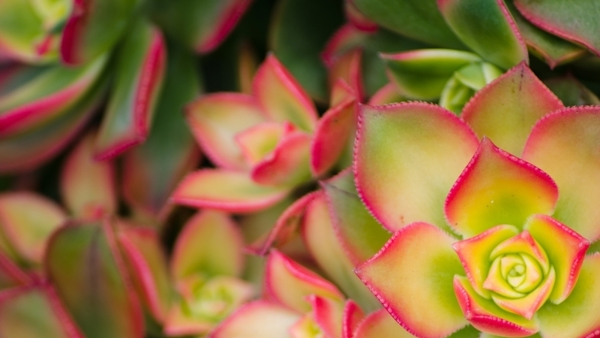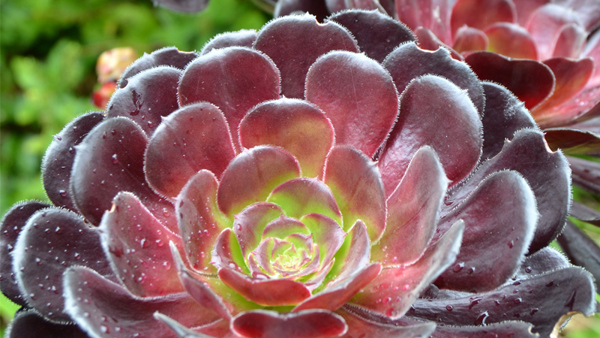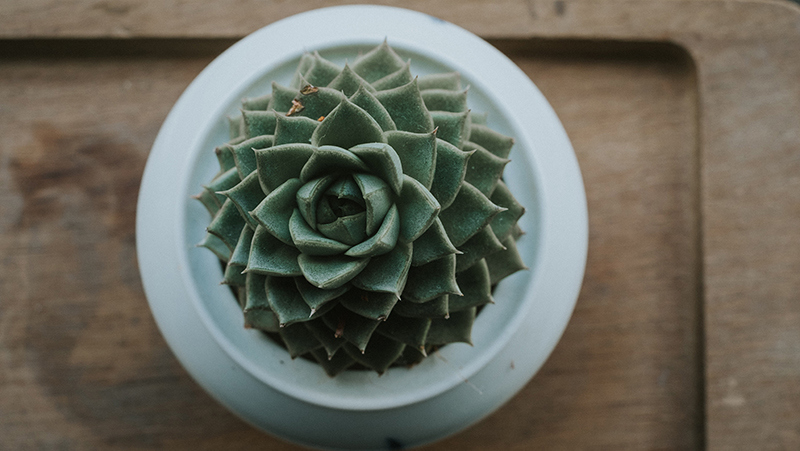Yates Account
Join now
Create a Yates account today!
Sign up to join the Yates Garden Club for monthly e-mails packed with seasonal inspiration, tips for success & exclusive promotions.
Plus if you’re a Garden Club member you can take part in the Yates Growing Community - a blog to share successes, get advice & win prizes in fun challenges along the way!

Forgot password
Enter the email address associated with your account, and we'll email you a new password.

This unique genus of succulents form flat, saucer-shaped rosettes of shiny foliage. Aeonium arboreum can grow to a branched shrub up to 2 m high. A popular variety is ‘Schwarzkopf’, which has dark mahogany to burgundy foliage. These evergreen beauties flower from late winter to spring. Aeoniums are predominantly native to the Canary Islands though some are found in Morocco and East Africa.
How to grow aeonium in a garden
- Choose a sunny spot with well drained soil. Enrich the soil with Yates Thrive Natural Blood & Bone with Seaweed. In areas with heavy or clay soil, to help improve soil structure and drainage, add gypsum and mix in well.
- Dig the planting hole twice as wide and to the same depth as the root-ball. Remove the plant from the container, gently tease the roots and cut away any circled or tangled roots.
- Position in hole and backfill with soil, gently firming down. Form a raised or doughnut shaped ring of soil around the outer edge of the plant's root zone. This helps keep water where it's needed. Always water in well after planting to settle the soil around the roots and keep the soil moist for several weeks while the new plant establishes.
- Mulch around the base with organic mulch like bark chips, woodchip or pea straw, keeping it away from the trunk.
- Water deeply, once or twice a week, depending on weather conditions.
- Feed in Autumn and Spring with Yates Thrive Natural Fish Seaweed+ Plant Food Concentrate to promote strong root development healthy colourful foliage.


How to grow aeonium in a pot
- Pick a variety that can be grown in a pot. Choose a pot at least twice the width and depth of the rootball. Position in full sun.
- Fill chosen pot with quality potting mix, such as Yates Thrive Cacti Succulent Potting Mix. Remove the shrub from the container, gently tease the roots and cut away any circled or tangled roots.
- Position in hole in centre of pot and backfill with potting mix, gently firming down. Water in well.
- Water deeply, once or twice a week, depending on weather conditions.
- Feed in Autumn and Spring with Yates Thrive Plant Food Spikes Cacti & Succulents to promote strong root development healthy colourful foliage.

Growing tips
- Aeoniums are quite low maintenance, though enjoy a healthy winter prune to avoid getting leggy. They look best as a nice bushy round yet natural shape.
- As they get taller they lose the lower foliage and become sparse and leggy especially during hot humid summers.
- Pruning will not restore a dense bushy habit. Instead it is best to take cuttings and replace old plants with new, after 5 years. Do this in early summer, make sure the stems dry and callus (in a cool place out of direct sunlight) before placing into a sandy propagating mix, keep just moist until rooted then re-plant into your prepared garden bed or container.
- Prune the flowers back in late spring to tidy the plant.
Zygocactus come in many colours and put on one of the most striking floral displays of any plant.
Yucca
Yuccas are striking plants that make a strong impact in the garden. Flowers are commonly white & held on strong stems above the foliage.
Rhipsalis
There is no plant like the Rhipsalis with long cascading green stems create an instant green waterfall wherever they are placed in the home.
Pig Face
Pigface provide an abundance of bright and cheerful flowers in Spring, they also play an important role as a soil stabiliser around our beaches.
Recommended products
Yates Thrive Natural Blood & Bone with Seaweed
A certified organic garden input boosted with NZ Seaweed to gently nourish plants, enrich the soil and encourage a strong healthy root system.
Yates Thrive Natural Fish & Seaweed+ Plant Food Concentrate
A complete plant food enriched with natural fish, seaweed, humates, molasses and more - boosted with NPK to improve plant and soil vitality.
Yates Thrive Cacti & Succulent Potting Mix
Specifically formulated for the successful growing of cacti and succulents, both indoors in pots and outdoors in the garden bed or pots.
Yates Thrive Plant Food Spikes Cacti & Succulents
Specially designed to feed your cacti & succulents where they need it most, at the roots. Just push into the potting mix & water!

















Share
Share this article on social media